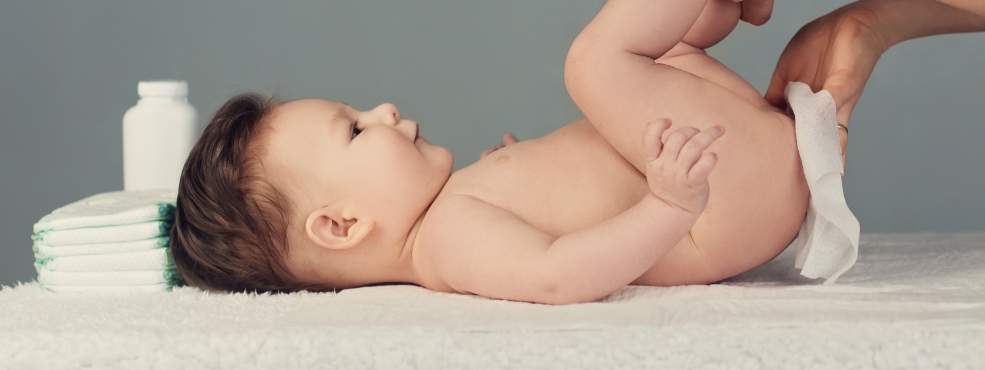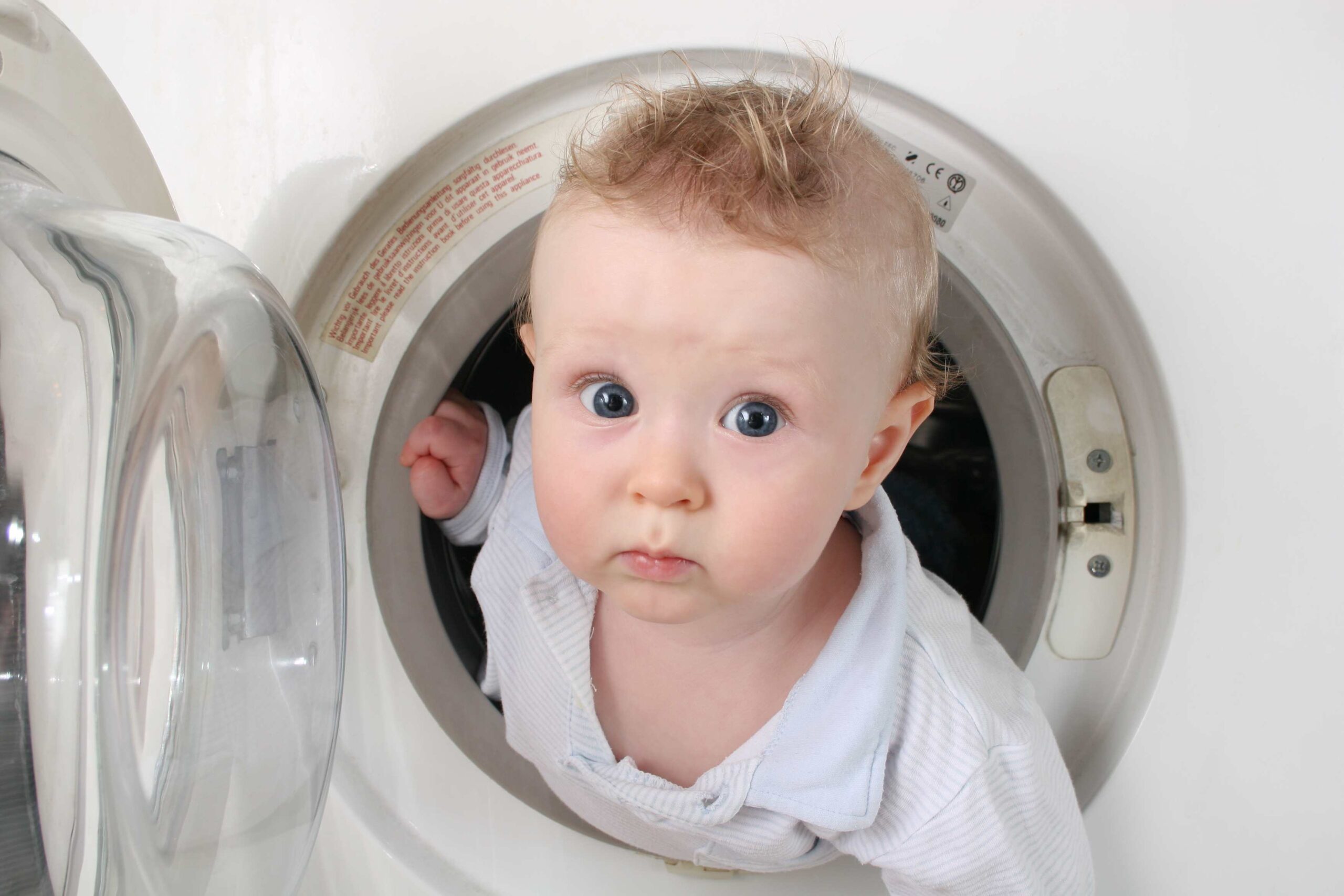Diaper irritation leads to an irritated baby. Follow these steps to ensure a smooth, soft, irritation-free bottom.
Diapers and wipes are just tools for keeping moisture away from the skin. Here’s what you need to know to use them to your advantage. (And pay attention; many of these principles apply to caring for our sensitive adult faces too!)
Choose the right diaper
Cloth or disposable diapers? The choice of diaper is not as important as keeping moisture away from the skin. . So the most important function of any diaper is to quickly absorb baby’s waste and confine it away from the skin. So a cloth diaper can do a fine job, you just may need to change the diaper more often.
If you feel compelled to use cloth diapers because of the significant environmental impact of disposable diapers, go for it. Most babies’ skin does just fine. If you have trouble with diaper rashes, then try switching to disposables.
As far as sizing goes, go up a size when the diaper is leaking or if the diaper fits too close to the skin. You want some space between the skin and the diaper to hold the wetness away from the skin, but not enough to cause a gap between the elastic around the legs.
.
Modern diapers are the ants of the baby product world – they can carry 80 times the moisture of a cloth diaper. Their incredible wicking power keeps water and irritating substances away from the skin. Exposure to wetness dries out the skin and enzymes and acids in urine and poop disrupt the outer skin layer by breaking down skin proteins and altering the pH which causes inflammation
Use Diaper Wipes
Always pat the diaper area dry rather than rubbing which causes mechanical shear force (friction) and damages the upper skin layer. The same advice goes for your own face – never rub your face, especially for acne-prone skin, or you will create micro-tears in the skin and shove bacteria into them.
Store bought wipes are great. While sensible adults use them for practical reasons, good research shows that they are gentler than water and a washcloth. In studies of preemies and normal babies, soft wipes containing an oil-based cleanser removed more diaper schmutz and led to decreased skin irritation. The cleansers in wipes are far superior at dissolving and removing pee and poop than water.
Wipes should contain only the essential materials, and be free of alcohol (mild alcohols such as benzyl alcohol are okay). Definitely avoid wipes with added fragrance and the preservative methylisothiazolinone, a common allergen.
Protect skin
Applying lotions and oils to baby’s bottom is common in many cultures. Oil massage is common in India, and it turns out that sunflower, safflower, sesame and apricot oils contain fatty acids (like linoleic acid) with anti-inflammatory properties. Creams with petrolatum and olive oil-lanolin helped protect skin as well. In premature babies, diaper cream actually prevented blood infections in a study in developing countries! A few studies even looked at applying breast milk to the diaper area and it had good anti-bacterial and protective effects.
Protect the skin by applying a barrier cream as thick as cake icing at every diaper change. My ultimate favorite diaper cream is Bepanthen, my second choice is Boudreaux’s Butt Paste. Don’t use powders because a baby can accidentally inhale them. And if you find the diaper sticks to the barrier cream, cover the cream with petroleum jelly (Vaseline) to prevent sticking to the diaper.
It is not necessary to wipe off barrier paste completely at each diaper change, but when removal is required, use baby oil.
Treat redness
Diaper rashes can be from irritation (contact dermatitis), yeast or bacterial infection. If the diaper area is red, step one is to apply any diaper cream. If the rash is particularly “angry” or “beefy” looking, you’re likely dealing with a yeast rash. You should probably have your doctor see the rash, but it’s okay to cheat by applying any over-the-counter anti-fungal like clotrimazole (for athlete’s foot or vaginal yeast infection) – it’ll do the trick. See your doctor if the rash is worse after 2 or 3 days of treatment.





